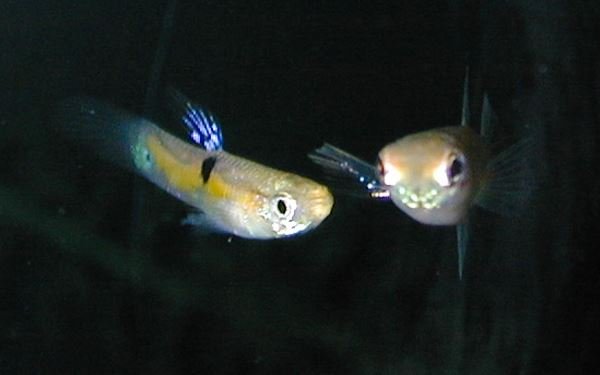
Guppy Physiology Is important
When we look at fish swimming in the aquarium all we see are the shape and colours. There is more to fish than just looking pretty. To understand what goes on beneath the visible you need to be aware of some of the physiology of fish, as they are essentially all constructed the same way. Like human beings, they are all put together in the same way but with regional differences in their size, colour and shapes.
The basic arrangement of the fins of fish is common to all. There are generally seven fins on a fish body, but depending on species, there may be five or eight fins. There is the dorsal fin, found along the top of the body, an adipose fin that is generally small, set between the dorsal fin, and the tail or caudal fin. The adipose fin is not present in all species.
On the lower part of the fish body what we would consider the chest area is found the pectoral fins of which there are two (Humans have pectoral muscles if you were wondering where you have heard the term). The two pelvic fins and the anal fin follow this.
Like all creatures, fish have evolved into distinct species, the case of the guppy and other livebearers its anal fin has evolved into a gonopodium. The pectorals have evolved into wings on the “flying fish” for example. Understandably, the fins are essential to the swimming habits of the fish. The dorsal and anal fins help maintain the fish’s equilibrium or upright position in the water. The tail (caudal) is used to propel the fish through the water, while the paired fins act as brakes or rudders for sudden and swift changes in direction while swimming. These are the basic uses of the fins. Individual fish species may differ, like those of catfish or rainbow fish.
Fish breathe through their gills. The water is drawn into the mouth over the gill membranes. It is then expelled through the gill openings on the sides of the fish’s head. The passage of the water over the gill membranes allows the oxygen present to be extracted and filtered into the fine blood vessels within the gill membranes. Fish in some parts of the world live in oxygen deficient water and over the years have adapted a storage system for the oxygen.
As we, all know fish have scales. These are small plates of a bony substance covering the body of a fish, rather like house tiles. The scales enable the fish to swim smoothly through the water. They are also useful in protecting the fish from hurting itself within the aquatic environment.You will notice the different mouths that fish have. Some will have an upturned mouth indicating it will probably feed on surface food, as opposed to the catfish
whose mouth has evolved to procure its food from the bottom of the tank or river. When buying fish for your tank take time to study the fish available and select those that will fit in with your expectations for your tank.